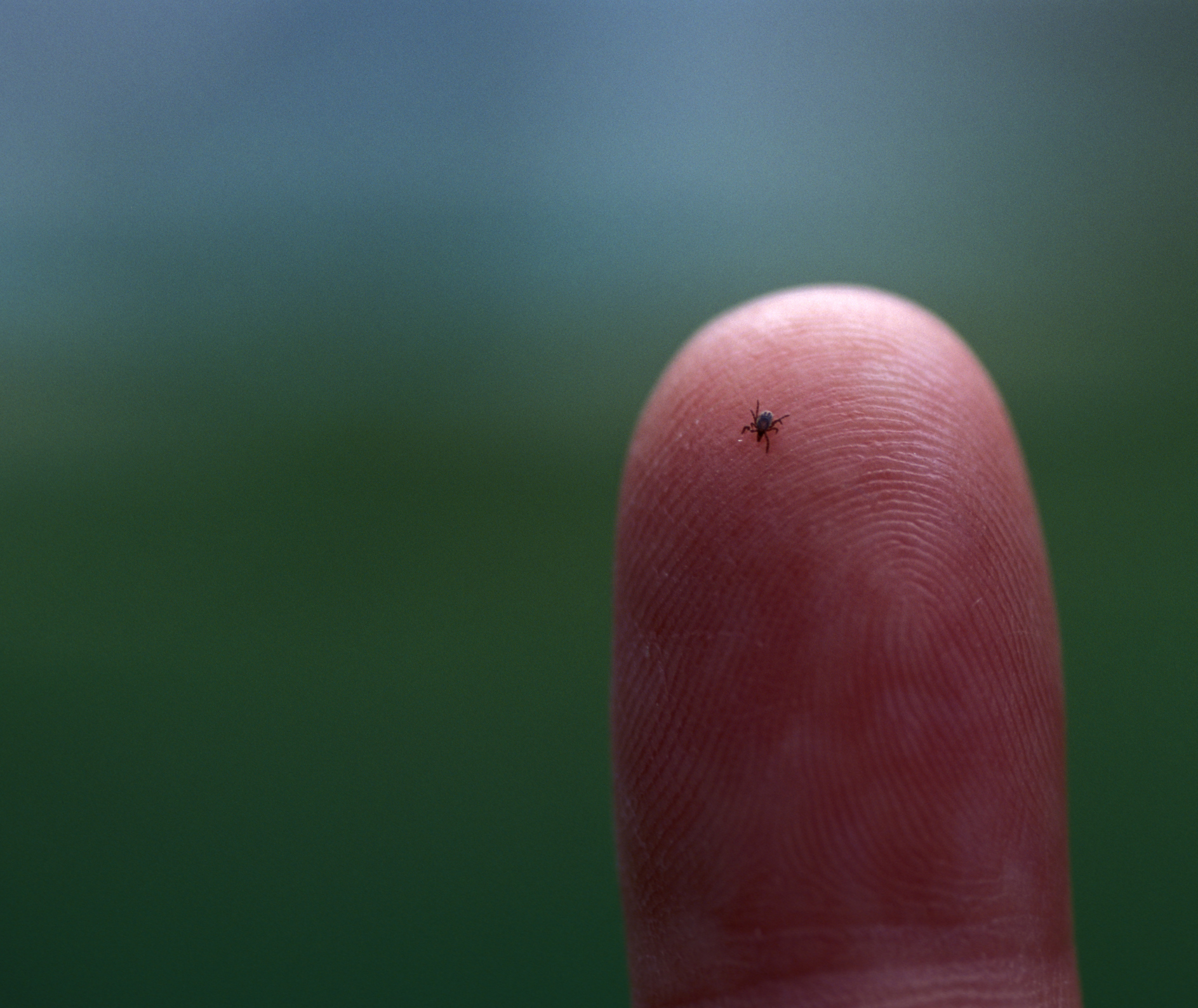The Medical Minute: Know the risks from ticks this summer

Dr. David Ingram’s young children love to play outdoors. So, he’s become the tick police, vigilantly checking for any parasitic arthropod crawling on them. He’s no novice to the role. Ingram is an infectious diseases physician and researcher at Penn State Health Milton S. Hershey Medical Center who’s keenly focused on tick-borne illnesses. He shares his insights about what every Pennsylvanian should know about the health risks from ticks, in particular the blacklegged tick.
What types of ticks are most problematic in Pennsylvania?
There are more than two dozen tick species in the Keystone State, including the Lone Star Tick and the American Dog Tick. Those two can carry the bacterium that causes Rocky Mountain spotted fever — a serious illness that thankfully is rare here. The tick that causes the most illness in Pennsylvania is ixodes scapularis, also known as the blacklegged tick or the deer tick. It’s responsible for Lyme disease and may also carry another bacterium that causes an illness called anaplasmosis as well as a parasite that causes another disease ― babesiosis. Those three illnesses ― Lyme disease, anaplasmosis and babesiosis ― are what Ingram sees most frequently in his clinical practice.
What tick-borne illness symptoms should we be aware of?
Some of the symptoms are the same, regardless of the specific illness: fever, body aches and fatigue. Lyme disease symptoms also may include the classic bullseye rash. But you may instead have a solid red rash, multiple skin lesions or in some cases, no rash at all.
With other tick-borne diseases like anaplasmosis or babesiosis, you’re less likely to develop a rash. Some patients with anaplasmosis have gastrointestinal symptoms including nausea, vomiting, abdominal pain and decreased appetite. These symptoms seem to be more frequently seen in anaplasmosis compared to babesiosis or Lyme.
When should someone seek medical attention?
The blacklegged tick must attach itself to you for about 24 to 48 hours before the harmful bacterium for Lyme disease is transmitted. For anaplasmosis, it’s around 24 to 36 hours, and for babesiosis, it’s about 48 to 72 hours.
If you know that you’ve had a blacklegged tick on you for 36 hours or longer, the Infectious Disease Society of America advises that you can see your doctor for a single dose of oral doxycycline to prevent Lyme disease. The medication would need to be taken within 72 hours of finding and removing the tick. Whether or not you end up going that route, after removing a tick, you should closely monitor the area for any rash and keep an eye out for other symptoms.
Especially here in Pennsylvania, where all of these tick-borne diseases are frequently encountered, if you have a nonspecific fever during the summer and have frequent outdoor activity, you should see your doctor, even if you never saw a tick on you. Blacklegged tick bites are often painless. Tick nymphs — the primary stage of the tick when it bites us — are the size of a poppy seed. The adult ticks aren’t much bigger. It’s easy not to know one was ever on you.
How do you diagnose and treat tick-borne illnesses?
Doctors take a detailed medical history including questions regarding travel and outdoor activity, conduct a physical exam and order blood tests to diagnose Lyme disease, anaplasmosis and babesiosis. The parasite that causes babesiosis infects red blood cells. It is most frequently diagnosed by looking at red blood cells under a microscope to identify the presence of the parasite.
The course of treatment for most tick-borne diseases, including Lyme disease and anaplasmosis, is the antibiotic doxycycline, which is usually administered for 10 days. Because babesiosis is a parasitic infection, its treatment is different. Doctors prescribe atovaquone and azithromycin. A patient can develop multiple tick-borne illnesses from one tick, so if they’re diagnosed with Lyme disease and are not improving as expected on doxycycline, then doctors should consider co-infection with babesiosis.
What can we do to protect ourselves?
Wear light-colored clothes so it’s easier to spot ticks. Especially if you’re hiking in tall grass or in the woods, limit the amount of exposed skin you have. Tuck your long-sleeved shirts into your pants, and tuck your pants into your socks. Use an insect repellent containing DEET. You can also spray your clothes with the insecticide permethrin.
Once you’re back inside, shower as soon as possible after carefully checking yourself for ticks. Look carefully around your ears, under your arms, around your waist and behind your knees — places people sometimes miss when doing tick checks.
If you see a tick on your clothes, wash them in hot water and dry on a high-heat setting. You can even skip the washing machine if you want — just toss them in the dryer on high for 10 minutes.
We’ve found a tick on our body. Now what?
First, don’t remove it with your bare hands, because you’ll risk squeezing it, possibly causing the tick to regurgitate its stomach contents back into your body. Instead, use a pair of tweezers to gently grab the tick as close to the skin as possible and pull it straight out. Then clean the area with soap and water or an antiseptic.
And absolutely don’t use a match or jelly to remove a tick. Those are old myths that in realty will cause the tick to latch on tighter and release additional toxins into the wound.
Related content:
- The Medical Minute: Surviving summer’s biting bugs
- The Medical Minute: Don’t let poison ivy ruin the day
The Medical Minute is a weekly health news feature produced by Penn State Health. Articles feature the expertise of faculty, physicians and staff, and are designed to offer timely, relevant health information of interest to a broad audience.
If you're having trouble accessing this content, or would like it in another format, please email Penn State Health Marketing & Communications.
